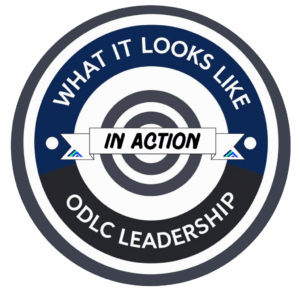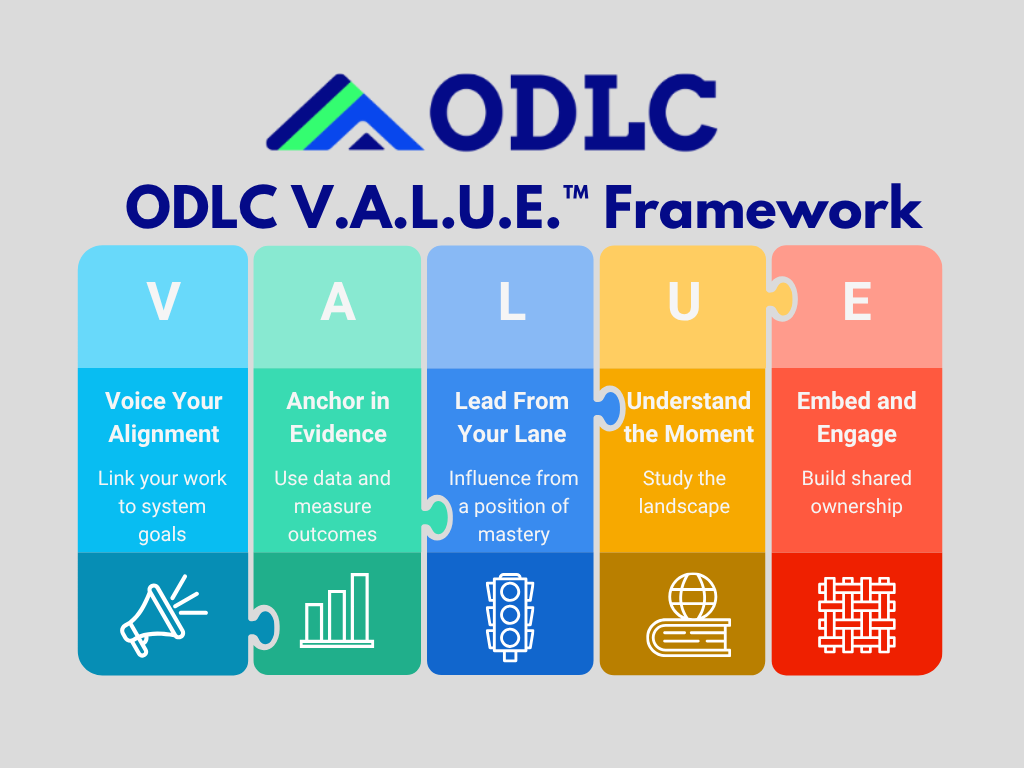Recently, we introduced the ODLC V.A.L.U.E.™ Framework — a strategic lens to help leaders navigate today’s complex health equity landscape with purpose and clarity.
Each week, we’re unpacking each letter of the framework, offering real-world insights and tools to help you lead with greater alignment, evidence, and impact.
This week, we start with “V: Voice Your Alignment” — a powerful reminder that how you frame your work is just as important as the work itself.
V: VOICE YOUR ALIGNMENT
Why great leaders translate equity into system goals — and how you can too.
In today’s climate, it’s not enough to care deeply about equity — your organization needs to understand how your work fits. Leaders who thrive aren’t just passionate; they’re fluent in the language of system priorities.
Voice Your Alignment means naming your equity goals in terms your executive leadership already values — quality, safety, access, reputation, retention, reimbursement. It’s how you show that your work doesn’t sit on the sidelines — it sits at the strategy table.
🛠️ Practice Tips: How to Voice Your Alignment
Try these simple shifts to frame your equity work as strategic, not separate.
- Match your message to system language — quote your institution’s mission or strategic plan.
- Show the return — link your efforts to value-based goals (e.g., lower readmissions, growth, higher workforce retention).
- Position equity as a solution, not a side note — frame it as closing gaps that already exist in operations.
TRUE STORY: How One Voice Changed the Conversation

An ODLC leader was preparing a department-wide update on her health equity initiative. Instead of leading with abstract ideals, she opened with a direct connection to system goals:
“This work improves access and reduces avoidable delays — which supports both our quality metrics and patient satisfaction benchmarks.”
That framing shifted the conversation. Equity was no longer perceived as a silo — it became a strategy. And the room began to listen differently. By speaking in strategic terms, the leader gained stronger buy-in — and her initiative moved forward with broader support.
Unless you voice your alignment, your efforts risk being treated as parallel tracks instead of strategic levers. The most innovative initiatives can stall when they are not linked to organizational outcomes like efficiency, quality, or access.
As Harvard Business Review explains in The High Cost of Misaligned Business and Analytics Goals, “Even the most forward-thinking projects lose momentum when they aren’t tied to core business priorities.” CLICK HERE to read the full article.
“The most innovative initiatives can stall when they are not linked to organizational outcomes like efficiency, quality, or access.”
Need help strengthening your links? ODLC’s Certificate Program in Transformative Health Equity Leadership is designed to help you translate your values into system-level impact. Scroll down to learn more and enroll.
Keep Moving Forward,
Dr. Erica


